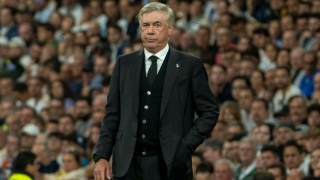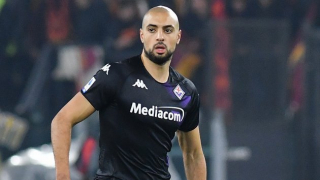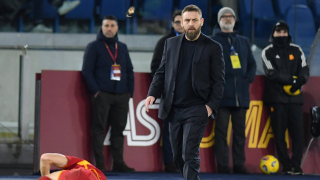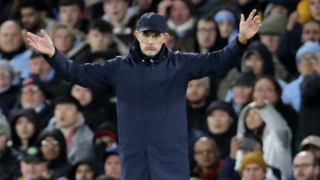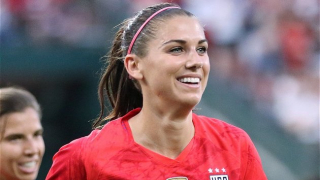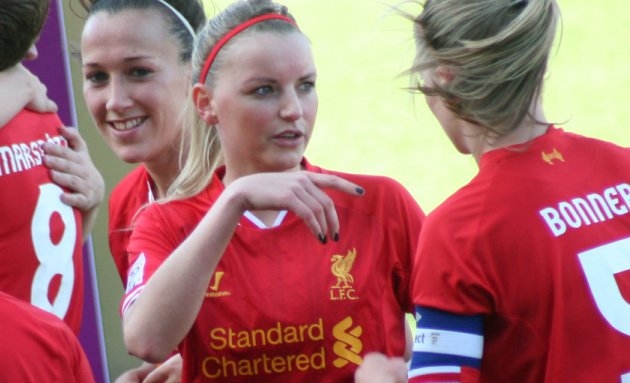This week, we take a look back in history at Major League Soccer (the 27-year-old men's league in North America with 29 teams this season) and their interest in starting a women's professional soccer league.
Recently, we discussed Major League Soccer's Commissioner Don Garber talking about the idea that their new third division men's league MLS Next could get involved in starting a lower division women's soccer league companion. Garber brought up the idea unsolicited in a press conference ahead of the launch of the 2023 MLS season (see: The Week in Women's Football: NWSL (P3) preview - Spirit Rodman bobblehead; Ex-Spurs coach Amoros at Gotham - Tribal Football). Garber's comments caused shudders among some of us who have been involved in women's football for decades; it brought back memories of MLS being less than welcoming to past women's professional league efforts and even attempting to start its own league over two decades ago. At that time Major League Soccer had just launched with 10 teams and it was a much different environment for the sport in the U.S., despite a very successful 1994 men's World Cup in the U.S.
The sport was struggling for fans and widespread media recognition and the league was threatened by the prospect of losing some fans in what was then a small market. Now MLS has 29 teams and multiple minor leagues and another World Cup is coming in 2026—co-hosted with Canada and Mexico. It still gives us pause and is worth a look back at what happened, including a quick review of each year of Women's United Soccer Association (2001-2003) and how it failed despite major media companies investing in the league, with much of the material coming from my book: Beyond Bend It Like Beckham—Chapter 3) (see below).
National Soccer Alliance (NSA)
After a very successful 1996 Olympic Games in the U.S. when women's soccer first entered after an extensive lobbying effort of the IOC with the U.S. winning the Gold Medal in front of record crowds in Athens Georgia, Harvard MBA graduate and sports marketer Jennifer Rottenberg began an effort to launch a women's professional soccer league, naming her prospective entity the National Soccer Alliance (NSA). In September 1997, she announced that the league planned to start a 20 game, 10-week schedule in an April-July window in 1998 with eight teams in:
- Boston (Natick, Mass)
- Dallas (Duncanville, TX)
- Los Angeles (Fullerton, CA)
- New York-New Jersey (Piscataway, N.J)
- Raleigh, North Carolina
- San Jose, CA
- Seattle, WA
- Washington D.C. (Bethesda, Md)
Rottenberg's model was to utilize high school and college stadiums that had seating for about 5,000-6,000. Her capitalization plans for $12 million would handle three years of league operations, breaking even after the first year with an average attendance of only 2,750 per game. The investment capital was meant to cover cash flow gaps since the league was designed to be self-sustaining. League player salaries would range between $15,000 and $30,000 for the season. U.S. National Team player Tisha Venturini gave a player's perspective on the value of the league: "This [NSA] is extremely important. Other countries have leagues and are getting an edge every day of the year, in practice five days a week, competing, where we have two games a month." Besides Venturini, other American stars such as Mia Hamm, Michelle Akers and Kristine Lilly committed to the league. NSA also received strong interest from top players in other countries. Anson Dorrance, coach of the U.S. World Championship team in 1991, was on the NSA advisory committee.
As Rottenberg was exploring high school stadiums for a Washington D.C. area franchise, she received a call from John Hendricks, the founder and CEO of Discovery Communications, who broached the idea of using a larger venue, University of Maryland's Byrd Stadium (with capacity for 35,000 at the time.) Hendricks ran a successful multi-channel cable television conglomerate with over 30 networks including Animal Planet, Discovery Health, The Learning Channel and flagship The Discovery Channel. Hendricks became a soccer fan through his children, like many had in North America at the time.
The budget and operations model for NSA seemed achievable, attendance projections were realistic and strong investors led the way, but the effort ran aground over U.S. Soccer's sanctioning for professional leagues in February of 1998. Looking back, Jen Rottenberg told this writer in an interview: "[When starting this effort] I was not aware of the Division I status. It was political. The fact you had to get approval wasn't on my radar screen. The players wanted in; we just needed investors."
The U.S. Soccer Federation's mission is to promote the game at all levels. However, the timing of NSA's effort was problematic for them, as beginning a year before the Women's World Cup 1999 could potentially cost them sponsorship and advertising dollars for the FIFA tournament which they had a sizeable financial stake in. If U.S. Soccer didn't sanction the NSA, then FIFA wouldn't either and players in the league could face sanctions from their national soccer federations, including bans from playing for their national teams.
The NSA leadership unexpectedly faced some rules that the American federation had implemented to avoid a situation that it faced in the late 1960's when three professional men's soccer leagues tried to start at the same time, almost committing hari-kari on the professional game. In 1967, the federation, known then as the United States Soccer Football Association (USSFA), was a weak organization and totally unprepared for the sudden interest in starting professional soccer, spurred by the live televising of the 1966 World Cup Final from England. One group, the United Soccer Association (USA) was given USSFA's blessing to operate which meant that they could recruit FIFA affiliated players from all over the world.
The other two leagues, who had merged to form the National Professional Soccer League (NPSL), was decreed an "outlaw league" but surprisingly managed to recruit enough players who risked suspension from FIFA in their home countries. The most troubling thing to federation officials was that the "unofficial" NPSL was able to sign a national television contract with CBS. The two leagues eventually merged into one entity (NASL) after the first season but FIFA and the American federation had learned its lesson. After the NASL's demise in March of 1985, U.S. Soccer, perhaps feeling a bit over-officious with too much time on their hands, developed professional and amateur league standards for Division I, II and III levels for both men and women, based on salient attributes such as coverage across their four regions, budgets, stadium capacity, and operating standards. The only problem was there were no Division I men's or women's leagues at the time.
So the NSA came along and seemingly fit the criteria but U.S. Soccer officials was concerned about the new league negatively impacting the 1999 Women's World Cup, both financially and taxing players with too many high-level games. To Rottenberg, the start date was non-negotiable; she reasoned that if they started the year before the Women's World Cup, she could then reduce the schedule of games to accommodate the 1999 WWC and 2000 Olympics. She explained: "We would have a baseline established even if they didn't win [in 1999.] If 1999 came and went and they didn't win the World Cup, what do you start with, the fourth best players?" Some hypothesized that Major League Soccer (MLS) had some influence on the final outcome; the nascent men's league was struggling to build a fan base and could be severely impacted if the women siphoned off even 1,000 fans a game. This concern was premature, though MLS would definitely play a role in WUSA's similar sanctioning woes a few years later. In the end, U.S. Soccer had the power to dictate and Rottenberg gave up her effort.
Women's United Soccer Association (WUSA)
After the NSA was rebuffed, John Hendricks didn't give up on the idea of a professional league and kept working behind the scenes, quickly taking over Rottenberg's leadership mantel when she walked away. With the widespread acclaim and phenomenal success of the Women's World Cup in the summer of 1999, Hendricks was ready and moved quickly. He locked up U.S. National Team player contracts in order to drive investors, television contracts and sponsors his way. All of the U.S. World Cup champions (with the exception of collegian Lorrie Fair) signed on as "founder members." Hendricks would ultimately set a team salary cap of $800,000 (double U.S. Soccer's Division I requirement), guaranteeing that the lowest paid players made close to what their MLS counterparts made—about $25,000 a year.
The WUSA clearly intended to pull in all the talent so that another league, if one was able to start, would be seen as minor in comparison. Hendricks, as Rottenberg before him, was new to American soccer's political minefield and ignored U.S. Soccer's sanctioning requirement, even though it could have been his undoing. Hendricks just continued signing players, focusing on the best international players, at one point claiming to have over 100 letters of intent or oral commitments from players around the world, but, without U.S. Soccer approval, FIFA could stop these internationals from joining the league.
There were grave concerns with whether the concept of a women's pro league would succeed at all. Burton Haimes, the chairperson of a U.S. Soccer Federation committee formed back in 1991 to investigate the feasibility of launching a Division I women's pro league, defended U.S. Soccer's cautiousness in not immediately giving the new league its blessing. Haimes said in 1999: "The idea is to launch a league not just based on [Women's] World Cup results. People are not going to invest [only] as a statement for women. In the end, they want to make money." U.S. Soccer's Secretary General Hank Steinbrecher added: "It's a very difficult business. Americans love a big event. But the women average less than 9,000 a game when not playing in an Olympics or [Women's] World Cup."
U.S. Soccer, often depicted as slower than your average everyday glacier, did not immediately approve the WUSA even though it more than met its minimum requirements. While the federation dithered, Major League Soccer showed an active interest in starting a women's league. U.S. Soccer and Hendricks finally agreed to both contribute $100,000 for Mark Abbott, who had designed MLS's business plan, to create three business models for a women's league. More politics, Abbott was still on the men's league payroll, as Chief Operating Officer. Two of the plans explicitly defined a relationship between WUSA and MLS, but WUSA investors preferred the third model, which would make the women's league completely independent. Hendricks publicly declared that WUSA was going its own way, forcing the men's league into a corner.
MLS could stand by as Hendrick's group nabbed a potentially major portion of the soccer marketplace or it could try to protect its turf. There really was no option for the four-year-old league that was struggling for a niche in the U.S. sports world. On March 30, 2000, MLS announced it would submit a bid for a Women's Major League Soccer. Hendricks didn't appear fazed, carrying on with announcements about his investor group, claiming he had $40 million in committed funds, not far short of the $50 million that MLS had when it started. Hendricks leveraged his media relationships to form his investor group, selling the league to other cable companies as content. The group included: Cox Communications, Comcast Corporation, and Time-Warner Cable. Amos Hostetter Jr., the Chairman of Pilot House Associates and cable pioneer of Continental Cablevision (which as MediaOne became the third largest U.S. broadband communication provider), joined Hendricks as an individual investor.
Hendricks announced the eight charter franchises in February of 2000:
- Atlanta Beat
- Bay Area CyberRays
- Boston Breakers
- New York Power
- Orlando Tempest
- Philadelphia Charge
- San Diego Spirit
- Washington D.C. Freedom
Chicago, Dallas, Los Angeles, Portland and Seattle missed out on the launch list. Besides the usual measures of suitable stadiums and soccer support, one unique key criterion used to select cities was: "substantial cable television distribution by one or more of the investors." Time-Warner controlled the New York and Orlando franchises, Cox operated clubs in Atlanta and San Diego, Philadelphia was run by Comcast and Hostetter ran Boston. Two franchises were equal partnerships among the investors; D.C. with Hendricks and Comcast while Hendricks and Hostetter ran the San Jose club. By the third season, Hendricks would be the sole director of the Freedom.
Tony DiCicco, who resigned as U.S. women's national team head coach by the end of 1999 to spend more time with his family, joined WUSA in an executive position. Well respected by Federation officials, he clearly understood American soccer politics and knew what was at stake when he said: "For U.S. Soccer and for the soccer community to turn their backs on the potential of this investor group would be the biggest folly in the history of soccer in this country, in my opinion. They have the resources and ability to pen avenues to media we have been dreaming about our whole lives."
A third group added to the confusion in April of 2000 by announcing its intent to seek U.S. Soccer sanctioning as a Division I professional league. The Women's Soccer Association was a South Texas-based entity that planned for twelve teams with "charter franchises" in Richmond, Virgina; Pennsylvania's Lehigh Valley and Flagstaff, Arizona. Not surprisingly, given their small markets, it soon dropped out with money problems.
Full proposals were due to U.S. Soccer by May 1, with a decision due in the summer of 2000. Behind the scenes, U.S. Soccer wanted WUSA and MLS to join forces. Hendricks would have no part of it. WUSA did submit a Cooperation Agreement to MLS addressing ways in which the outfits could work together, essentially on marketing, promotion, scheduling, and stadium development. Hendricks explained his reasoning, "It's extremely difficult [for the groups to operate the league together]. It could mean one of the controlling groups has two priorities, the men's game and the women's game. We think this is very important, that there be an investor group fully behind the women's league, with the women's league being the sole priority. It doesn't mean we can't have a cooperative agreement."
The gender war in soccer, a new version of the long history of fractious American soccer leagues, was finally averted when the two groups signed an agreement to work together in late May. Both league leaders seemed sincerely pleased; MLS Commissioner Don Garber explained, "We came very close, we had our application ready to go. At the 11th hour, John and I and the investors were able to get together and have a meeting of the minds that made sense. It's something that we are very excited about. We feel that today's announcement will result in a relationship that is best for the growth of soccer at all levels, not just the men's and women's league but at youth levels."
John Hendricks won his argument of a league focused on women, "We think this is a break-through in league cooperation in this country. We're excited that this plan develops a cooperation both in the immediate future and is also very forward-looking." The players, supportive of WUSA all along, were ecstatic with the results: "Obviously, as we've seen from other sports, having two leagues wouldn't have been best for the game," said U.S. WNT captain Carla Overbeck [and has been an assistant coach at Duke University for three decades].
As part of the agreement, MLS and WUSA discussed operating expansion teams in each other's territories. Five of the new WUSA's eight markets also had a MLS franchise: Boston, New York, Orlando-Tampa, San Francisco Bay Area, and Washington D.C., though the WUSA's Orlando franchise would relocate to Raleigh-Durham to become the Carolina Courage before the first game, after Time-Warner couldn't finalize a stadium lease contract. Under their new cooperative relationship, if WUSA wanted to start a team in a city that MLS had a team in, that franchise would be operated by MLS or its investors in that city, for example in Los Angeles. From the men's league perspective, WUSA franchises Philadelphia (Comcast) and Atlanta (Cox) had attractive investors in potential MLS expansion sites. In theory, both leagues gained; MLS received the added exposure from WUSA's major cable operators and WUSA got the benefit of the experience that MLS had in the American soccer market.
With all barriers now gone, in August 2000 U.S. Soccer anticlimactically granted WUSA it's official approval as a Division I pro league. Mia Hamm succinctly said: "This is a wonderful time for soccer in this country."
WUSA's business plan called for losses of $37 million with the break-even point coming in year four or five. The ownership group committed to $40 million for league expenses plus an additional $24 million for venue development. Hendricks said: "With this investor group, if we got into a fifth year and said, 'Hey, we need another $20 million,' everyone would be willing to fund this, whatever amount it would take."
They set a target of an average attendance of 6,500 but then raised it to 7,500 per game for the 2001 season. The television rights were purchased by Turner Network Television, who paid $3 million to carry 15 games in 2001. Turner Sports President Mark Lazarus said: "Given the national promotion, the local promotion, the push the operators will put on and what the league will put together, we think we can draw somewhere in the neighborhood of a 2.0 rating with this programming." Hendricks agreed that a projection of 2.0: "is reasonable at this point." These forecasts were based on the 11.4 the women drew for the 1999 Women's World Cup Final, not the 0.4 MLS average on ESPN/ESPN 2.
Similar to Major League Soccer and other leagues during the 1990's, WUSA had a single-entity business structure, established as a limited liability company. Investors operated clubs but owned shares in the league, not individual teams. The league negotiated all player contracts and set strict salary cap guidelines. The model neutralizes larger markets' ability to spend more than smaller markets; even sponsorships were leveraged across the teams as well. Equalized spending by teams is also designed to promote parity of play, preventing team dominance on the field solely through having a bigger wallet. The single entity model essentially was developed to protect owners against themselves while conveniently eliminating player leverage in individual team negotiations. Also, the WUSA founding players were considered shareholders in the League, taking an equity stake in lieu of higher salaries. Uniquely empowered, they felt that they could influence the direction of the league.
The help with expansion from MLS never happened but the WUSA didn't lose any of the 8 original franchises during their three years in existence.
WUSA—Season 1
On April 14, 2001, the WUSA officially kicked off with a bang in front of an enthusiastic crowd of 34,148 at RFK Stadium. The promotional hype was D.C. Freedom's Mia Hamm vs. the Bay Area CyberRays' Brandi Chastain but the game really was a celebration of the growth of women's sports. The CyberRays fell by a single goal in a choppy, uneven match but this didn't upset a buoyant Chastain in post-game interviews when she said that: "[The loss] doesn't diminish the fact that we are a part of history and we've changed American culture for young girls. People asked me this week, 'What would make this league a success?' and I said, 'We've already been successful. We started a league.'" TNT's rating for the game was 0.5 for 393,087 households, better than two MLS games on ESPN and ESPN 2. Not only that, soccer followers noticed that the 34,000 crowd outdrew every MLS game that weekend, which much have had MLS executives extremely nervous.
The impressive opening day helped get the league off to a rousing start. After 47 games of the 84-game regular season schedule, average attendance reached 8,657 per game, well ahead of expectations. League publications cited possible expansion markets as: Chicago, Columbus, Detroit, Los Angeles, Miami, Portland, OR and St. Louis. MLS had teams in Chicago, Columbus and L.A. but sources in Columbus said that, in spite of the agreement between the two leagues, no talks had transpired between the Crew to bring the WUSA into the Ohio Capital. Furthermore, the Crew management had no interest in the idea. Both leagues monitored stadium development efforts in Denver, Houston and Milwaukee.
The most positive aspect to the first season from a league standpoint was the average attendance of 8,116 for regular season games (8,307 with the three playoff games added), which was 10% above the revised target of 7,500 a game. D.C. Freedom (14,421) and Atlanta Beat (11,092) finished well above the mean, while Boston (8,012) finished just under. San Jose (7,692) and Philadelphia (7,541) posted strong numbers while Carolina (5,255), New York (5,742) and San Diego (5,714) lagged behind.
Fans enjoyed the in-stadium experience, with all teams staging lots of activities primarily geared for children. Unfortunately, the attendance numbers didn't translate to the TNT viewing figures. The first-year ratings averaged 0.36; the low ratings socked the television company owners in their root business. For year two, games were moved to the PAX network, who guaranteed a consistent spot on Saturday afternoons...at the exact time as MLS games on ESPN/ESPN 2; so much for the cooperative agreement! Another problem was that PAX was not widely available by local cable providers throughout the U.S. and had low name recognition.
The clincher in the bad news department was that the five-year investment cushion of $40 million was gone before the playoffs. The league reported income of only $5.5 million. John Hendricks dismissed concerns by saying: "The amount of investment in the WUSA, more than $60 million, is relatively small change to the companies involved. You have to realize this is at a level in Discovery (cable network) terms of three documentaries a year. For some of the other companies, this is a small investment." Despite the astounding amount of money that was burned through in a matter of months, the investors were still committed and positive. Fred Dressler, who directed Time-Warner Cable's interests in the league, said: "We couldn't be happier. This has been one of the best things that we've done in a long time. Anybody's who's been around the games, around the players, knows this is a unique opportunity."
Further complicating the ledger sheet was that the WUSA generated far less revenue in sponsorships than it had anticipated; a strong point of WWC'99. Advertisers didn't see the connection beyond the noble goal of helping a cause and their business objectives. With no business rational of assisting with their key goals such as brand building or increasing sales, sponsorships fell into another business line item: the charitable donation category. The trouble with WUSA's link with the women's movement is that, compelling though it was, the league now competed against United Way contributions, company sports tickets, and the like.
WUSA became a nice to have for organizations but these are also the first things cut when times are bad. League brass believed, to their mistake, that the WUSA's primary weapon in generating sponsorship dollars was the connection the teams and players had made in their communities, which bred fierce fan loyalty, which Time Warner's Dressler discussed: "The sponsors see this as a special audience and a captive audience that they can attack in a different way than normal sponsorships work." Attracting sponsors was to be a lasting problem for the WUSA however. The market unfortunately simply did not respond to the intangibles that were created by the existence of a professional women's sports league.
WUSA—Season 2
The league made some big changes for 2002. League headquarters moved from New York City to Atlanta. Cox Communication owned 25% of the league through its Atlanta and San Diego set-ups and provided legal, technological, marketing, public relations and administrative support from its corporate offices. In the process, the league cut permanent staff from 26 to 17, with more than half the latter figure being new hires.
In the fall of 2002, the operation post-ops were worrisome and league officials worked hard to reassure fans, players and sponsors, all the while bailing out the red ink that poured into the entity. The big positive the first year, average attendance, was no longer such a bright point, falling from 8,307 to 7,114 per game, a 15% decline and way off the 8,500 target. Washington D.C. (9,297) and Atlanta (6,784) showed the largest drop-offs from 2001 by almost 5,000 fans a game while Boston showed a huge gain to 8,120, the second highest total. The Mia factor was still important to the other teams but less so at home; the Freedom drew almost the same amount to every road game (9,191) as they did at home (9,297).
TV ratings plummeted as well from 0.4 on TNT to 0.1 on PAX. The financials were frightening; the league spent $29 million in 2002, down from $40 million and while expenses did drop, revenues were a paltry $9 million. The WUSA had spent close to $70 million in two seasons, offset by income of about $15 million. Despite the deficit that would seem to warrant World Bank assistance, league officials remained positive. Former U.S. National Team player Kevin Crow, who left an executive position with the San Diego Spirit to become the league's new Chief Operating Officer, said confidently: "If you've ever sat at the league meetings, ever been to a board meeting with investors, it would be impossible to come out with this thought process [that the league is struggling to survive.] Do you think I'd be moving across the country [from San Diego to Atlanta] if I thought this was a risky proposition?"
Founder John Hendricks continued to feel that the WUSA would be profitable by 2007: "Our expectations are that at some magical moment in time, probably between the fourth year and the sixth year, the revenues will exceed the expenses. And we know we have a successful business for the long term."
WUSA—Season 3
Despite the bravado statements from the league chiefs, the money troubles began to manifest themselves publicly when WUSA slashed the player budgets for year three to help reduce expenses. The founding players took pay cuts from $80,000-$85,000 down to $60,000, with the team salary cap of $834,500 in year one falling by almost thirty percent to $595,750. The league average salary dropped from $46,631 to $37,234. Rosters were cut to 16 full-timers (down from 20 in 2001 and 18 in 2002), two reserves and a new cheaper developmental player classification who would suit up only when full-time players were unavailable. The U.S. Soccer Foundation funded one reserve spot per team starting in 2002. It was not a good signal that the Foundation, charged with distributing grants to develop the game earned from interest income on the $40 million principal in profits from the hugely successful men's World Cup 1994, would invest only about $150,000 in the venture.
John Hendrick's deep pocketed investors had put up $40 million to start the league, another $20 million at the end of 2001 and $40 million during the second season. Hendricks admitted in retrospect: "By the start of 2003 it was clear we were running out of finances."
In June 2003, this author had a long discussion with a women's soccer coach with strong contacts in the league who argued that the WUSA's objective as television content was an unmitigated disaster. He felt that the league would expire, most likely during or after its fourth season in 2004. Turned out the desperation was far worse than most followers imagined and the league was tanking. This writer even received a call from a panicked Tony DiCicco, who was still the commissioner, wanting me to stage a WUSA exhibition in Detroit, Michigan/Toledo, Ohio for an astoundingly high fee, which had risen 100% over what we had discussed the previous season.
The End of the Dream
Through attracting solid crowds in six cities and leaving U.S. Soccer and FIFA with a sizable profit, the 2003 Women's World Cup—moved to the U.S. on short notice from China after the SARS virus caused the Asian nation to step aside—was a positive event for the sport in the U.S. and abroad. However, by staging the games in September and competing against football and baseball, the Cup never had a chance to reignite the iconic mega-event of 1999. The 2003 Women's World Cup and the WUSA will forever be linked, but in a way that no one expected.
Five days before the start of Women's World Cup 2003, Saint John Hendricks overshadowed it with his announcement, on September 15, that the WUSA was suspending operations immediately as Hendricks explained: "A shortfall in sponsorship revenue and insufficient revenue from other core areas of the business proved to be the hurdles which the WUSA could not overcome in time for planning the 2004 season."
Time-Warner, who operated the New York Power and Carolina Courage, and Comcast, who ran the Philadelphia Charge, bailed out after the 2023 season ended. Hendricks further explained: "In August, it was pretty critical, getting down to running out of [money]. We were in jeopardy that if we didn't shut down [when we did]; we would not have a good [employee] severance plan, and it would likely force us into bankruptcy."
The budget tightening and reduced salaries had cut the gap between expenses and revenues by $4 million from $20 million in 2002, but the $16 million difference and approximately $100 million spent in three years left them with too much of a hole to fill. Hendrick said: "We didn't see any immediate impact that could bridge the funding problem. We tried as a last resort to look around the country to see if there were any alliances that we could make…piggyback on the infrastructure of other sports teams [and leagues]. That was just too challenging. There were very few opportunities where we could tackle this."
Philip Anschutz, who controlled up to six MLS franchises at one time and built the soccer specific Home Depot Center in Carson California, was solicited but passed at the start of September. This summed up the value of the treaty WUSA had signed with MLS three years before. The most visible aspect of their working relationship were doubleheaders with the MLS and WUSA franchises in D.C. Otherwise, MLS seemed to keep its distance so WUSA lacked the guidance of a league that had started less than seven years before.
The WUSA's inability to attract sponsorships, a problem since the beginning, was the death knell for the league. Going into the 2002 season they needed to find eight companies (four each in 2002 and 2003) to pay $2.5 million a year for exclusive sponsorship rights within a category such as automotive, sportswear, technology, etc. Only Hyundai and Johnson & Johnson joined at $2 million each. Hendricks admitted, "I was intoxicated by what I witnessed during the '99 [Women's] World Cup, and all the sponsors surrounding that event."
Lynn Berling-Manuel, then Editor-in-Chief of Soccer America wrote, "Our sport is still challenged, both for women and men, to turn the millions of soccer players in the United States into fans. Butts in seats and TV ratings are how a sports success is judged. Sponsors are being pointed to as the culprits that didn't support women's pro soccer, but the reality is that those companies have many, many choices of avenues—both sport and non-sport—to speak to female customers. With modest attendance figures, microscopic television ratings and a tough economy, the WUSA was a difficult choice for them to make."
The falloff in average attendance—from 8,116 in 2001, 7,116 in 2002 and 6,667 in 2003 (an 18% slide in two years)—indicated that the product wasn't resonating even with those who had gone to a game. In year 3, D.C. still led in attendance (9,928) followed by Philadelphia (7,245), Atlanta (6,958), Boston (6,931) and San Jose (6,781) above the average. Carolina (5,737) San Diego (5,635) and New York (4,249) dragged the total down. The Freedom still led in away attendance (8,445) but clearly the Mia effect on the league had worn off as D.C. only had a slight advantage over the surprising New York Power (7,957), who drew 87% more on the road for every game than at home. Perhaps New York should have played all their games on the road as there were whispers that their abysmal home attendance figures were inflated. Apparently some fans came to their games dressed as empty seats. By comparison, MLS's average attendance during those 3 years was 14,961 in 2001, 15,821 in 2002 and 14,899 in 2003 (See table 3.6 in the appendix). Hendricks would later admit in September of 2003 that, "I mistakenly assumed ['99 World Cup support] would flow over to the league."
U.S. Soccer President Bob Contigulia told the author in 2007: "The '99 World Cup brought tremendous attention to the women's game and women's causes. Players interpreted it that they could accomplish anything. Expectations were overestimated in terms of a pro league. We learned a successful event does not equate to a successful league. They believed their own press releases. Players did it as a cause; they didn't do it as a business."
Even John Hendricks had trouble at the end separating the sponsor's needs from the mission: "It's a discouraging thing to read about huge deals to sponsor one athlete in the tens of millions of dollars," he said, referring to Nike's $90 million deal with high school basketball star LeBron James [still playing with the Los Angeles Lakers and who took over the NBA all-time points scoring record, surpassing Kareem Abdul-Jabbar's long-held record for all-time points of 38,387]. Even though Nike was one of Mia Hamm's sponsors and had even named the largest building on their Oregon campus after her, they refused to do more for WUSA beyond outfitting three teams.
Hendricks added with some frustration: "Some minor NFL stars sign $2.5 million deals. Why not do one less shoe deal and spread that $2.5 million to 160 players, support women's professional soccer and allow little girls the chance to dream that maybe they can play professional sports. That's something all of us guys got [professional sports] was always a dream, regardless of whether we could do it."
Berling-Manuel further commented, "It's amazing the coverage that WUSA's demise is getting. Happening days before the opening of the Women's World Cup is certainly part of that, but it also makes clear that the WUSA is still considered as much a social story as it is a sports story."
Freedom coach Jim Gabarra years later commented on the WUSA's counterproductive salary structure which contributed to its demise: "Teams kind of landed like an alien ship in their markets, and they didn't have grass-roots support. From the players' point of view, the WUSA was a nice gig. They worked six or seven months and got paid for twelve. It didn't make economic sense."
Soccer America's Mike Woitalla felt that, for a sport that had only infiltrated mainstream consciousness beginning in 1996, it was "terribly over-optimistic" to expect the league to thrive. The WUSA also was hopeful that young female players would drive attendance figures, dragging their players to games. That didn't happen in the numbers that they needed and so often in America, the youth market was seen as the panacea for professional clubs. The lament was that if the driving age was 12, that professional soccer for men and women would have boomed beginning in the 1970's. What wasn't factored in for the WUSA was that many of those young players were involved in their own games on the weekend, often in other cities, and the last thing that their parents wanted to do was sit through another soccer game, even with world class stars.
The WUSA professionalized the women's game for the first time and the media company involvement was unprecedented for the sport at any level. For the players, as three-year Atlanta Beat veteran Nancy Augustyniak said wistfully to this author a few years later: that playing in the league was, "The best three years of my life."
One hopes that, if MLS does eventually start a women's professional minor league, that they do it seriously and put in full effort. I know that I wrote about history from over two decades ago, but history does matter, and we must ensure—in this case—that it doesn't repeat.
Tim Grainey is a contributor to Tribal Football. His latest book Beyond Bend it Like Beckham is on the global game of women's football. Get your copy today.
Follow Tim on Twitter: @TimGrainey

